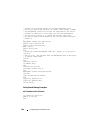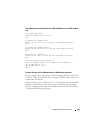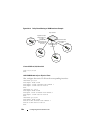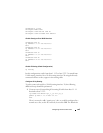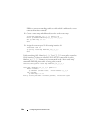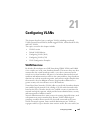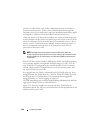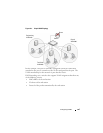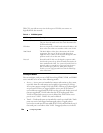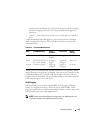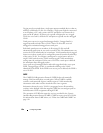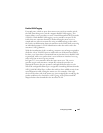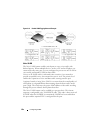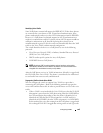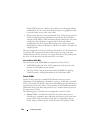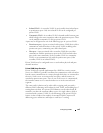
648 Configuring VLANs
Table 21-1 provides an overview of the types of VLANs you can use to
logically divide the network.
Switchport Modes
You can configure each port on a Dell Networking N2000, N3000, and N4000
series switches to be in one of the following modes:
• Access — Access ports are intended to connect end-stations to the system,
especially when the end-stations are incapable of generating VLAN tags.
Access ports support a single VLAN (the PVID). Packets received untagged
are processed as if they are tagged with the access port PVID. Packets
received that are tagged with the PVID are also processed. Packets received
that are tagged with a VLAN other than the PVID are dropped. If the
VLAN associated with an access port is deleted, the PVID of the access
port is set to VLAN 1. VLAN 1 may not be deleted.
• Trunk — Trunk-mode ports are intended for switch-to-switch links. Trunk
ports can receive both tagged and untagged packets. Tagged packets
received on a trunk port are forwarded on the VLAN contained in the tag if
the trunk port is a member of the VLAN. Untagged packets received on a
Table 21-1. VLAN Assignment
VLAN Assignment Description
Port-based (Static) This is the most common way to assign hosts to VLANs.
The port where the traffic enters the switch determines the
VLAN membership.
IP Subnet Hosts are assigned to a VLAN based on their IP address. All
hosts in the same subnet are members of the same VLAN.
MAC-Based The MAC address of the device determines the VLAN
assignment. This type of VLAN is useful when a host
might not always connect to the network through the same
port but needs to be on the same VLAN.
Protocol Protocol-based VLANs were developed to separate traffic
based on the protocol type before IP traffic became the de
facto standard in the LAN. Use a protocol-based VLAN on
networks where you might have a group of hosts that use
IPX or another legacy protocol. With protocol-based
VLANs, you can segregate traffic based on the EtherType
value in the frame.



